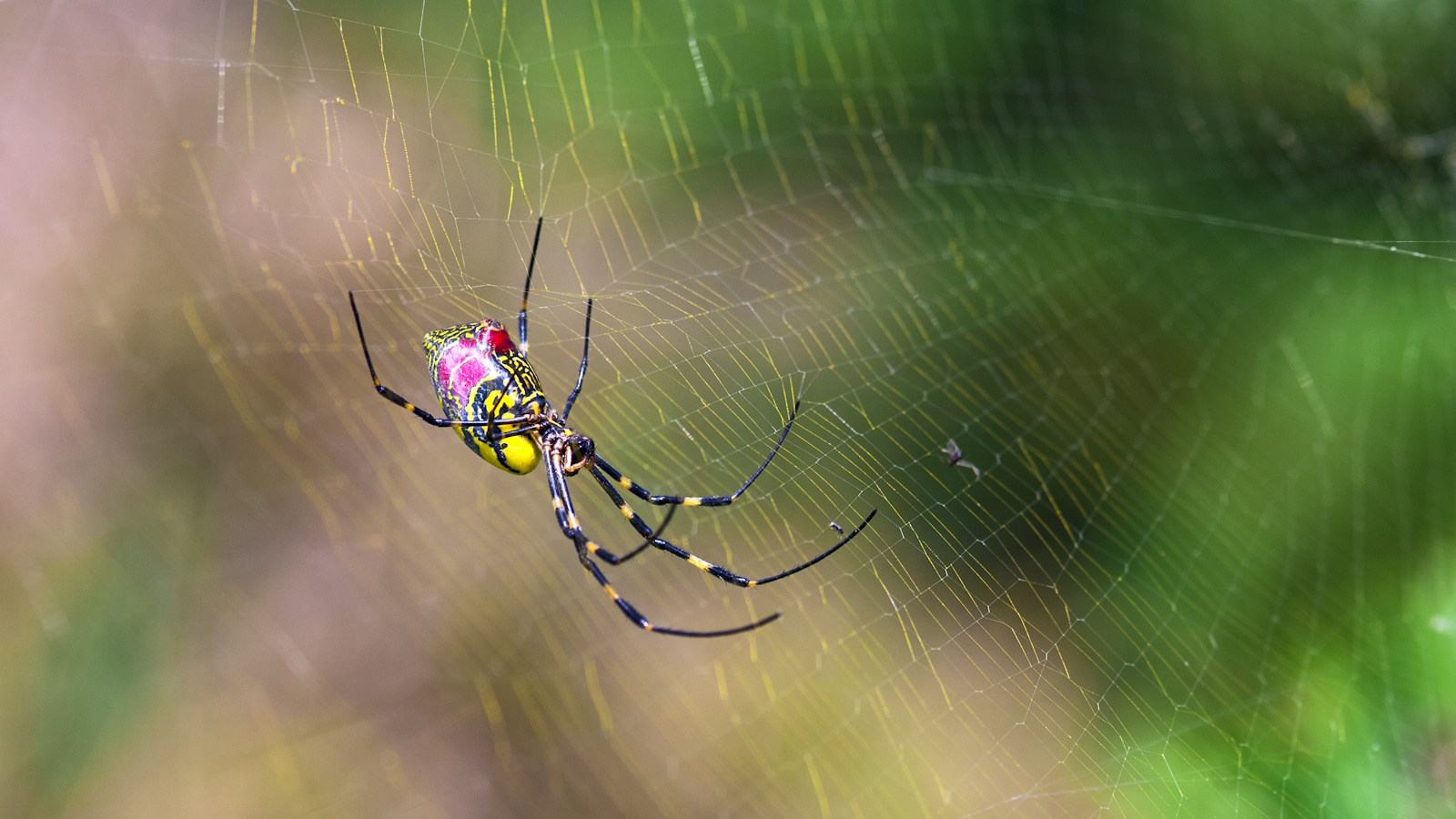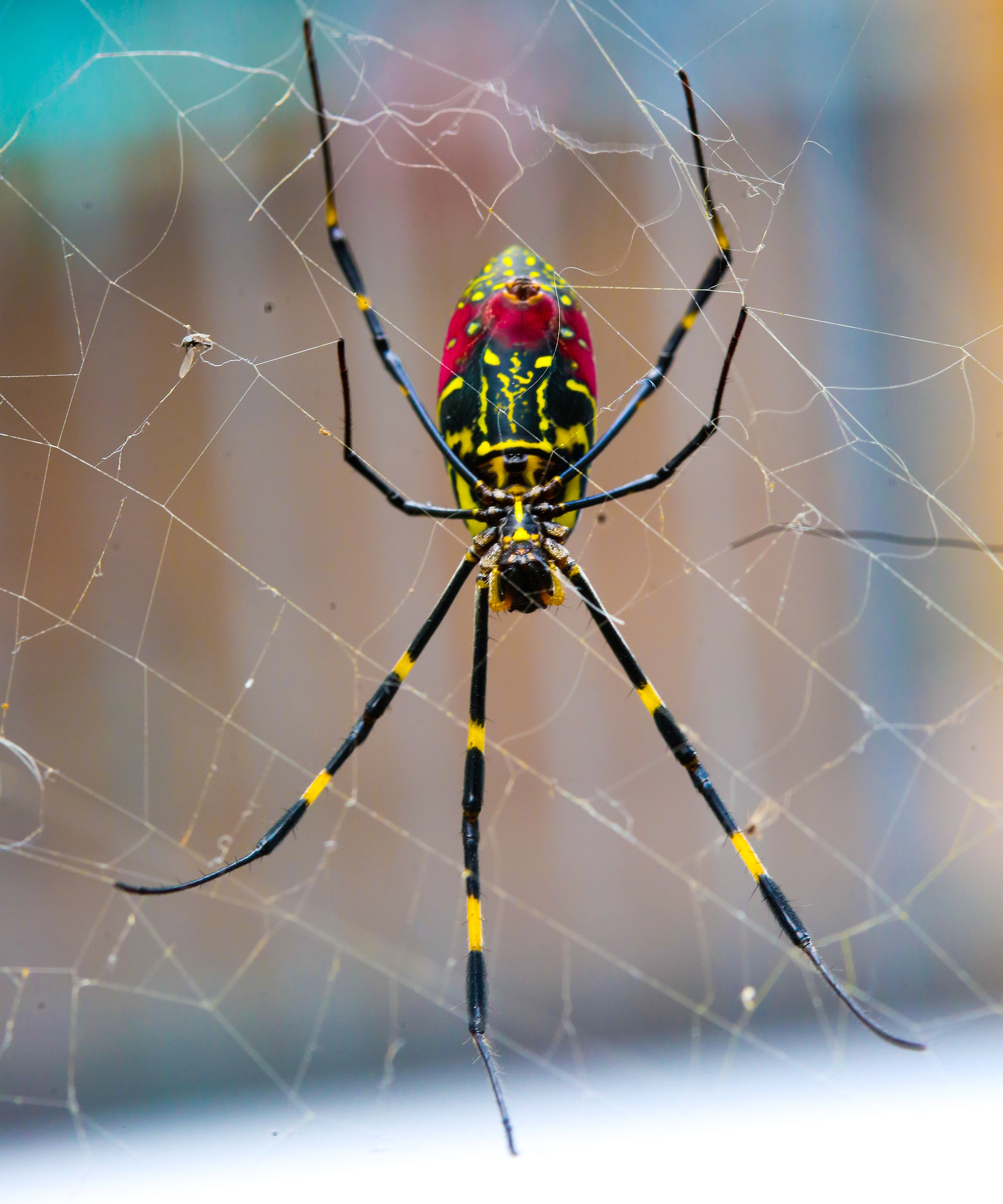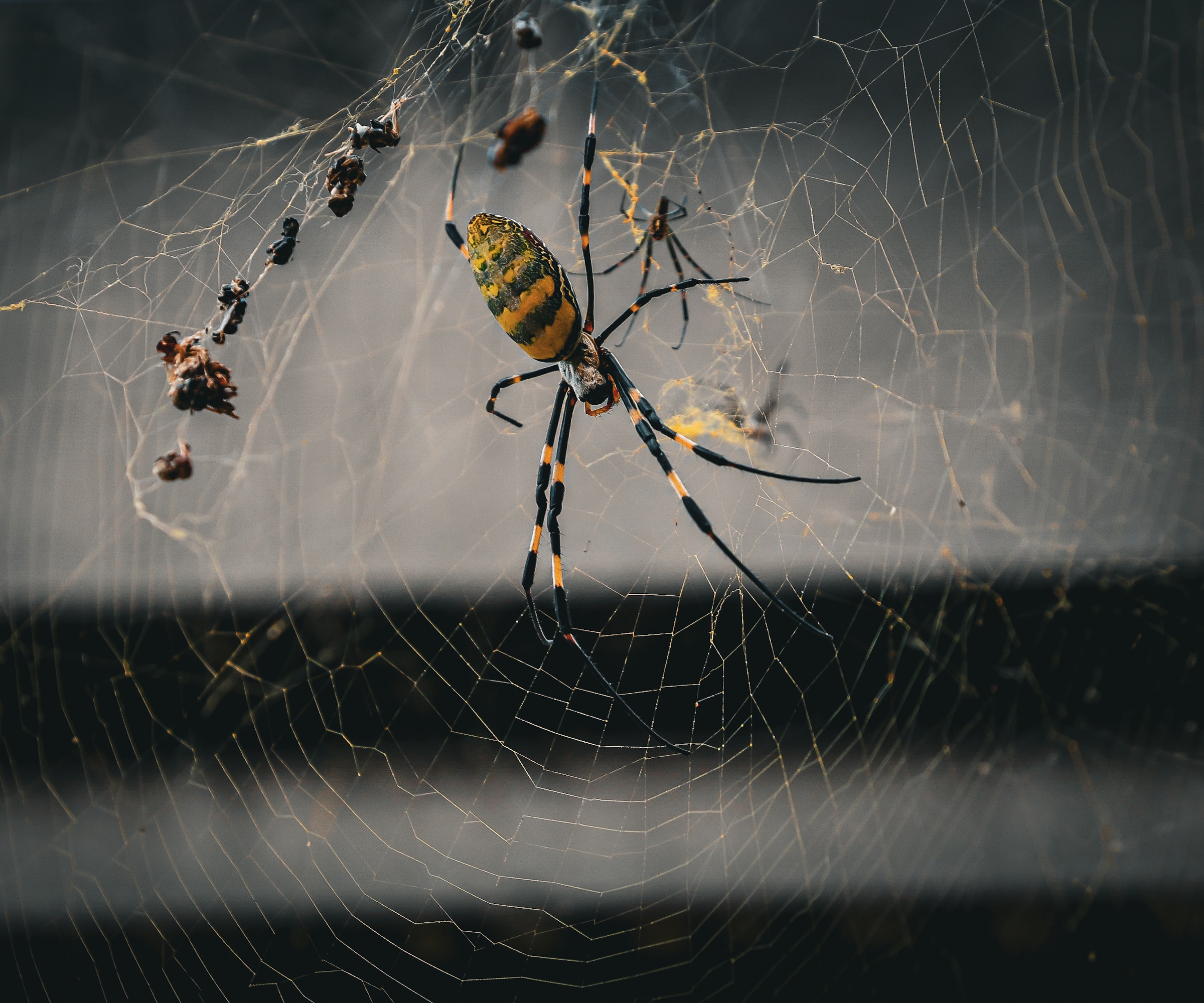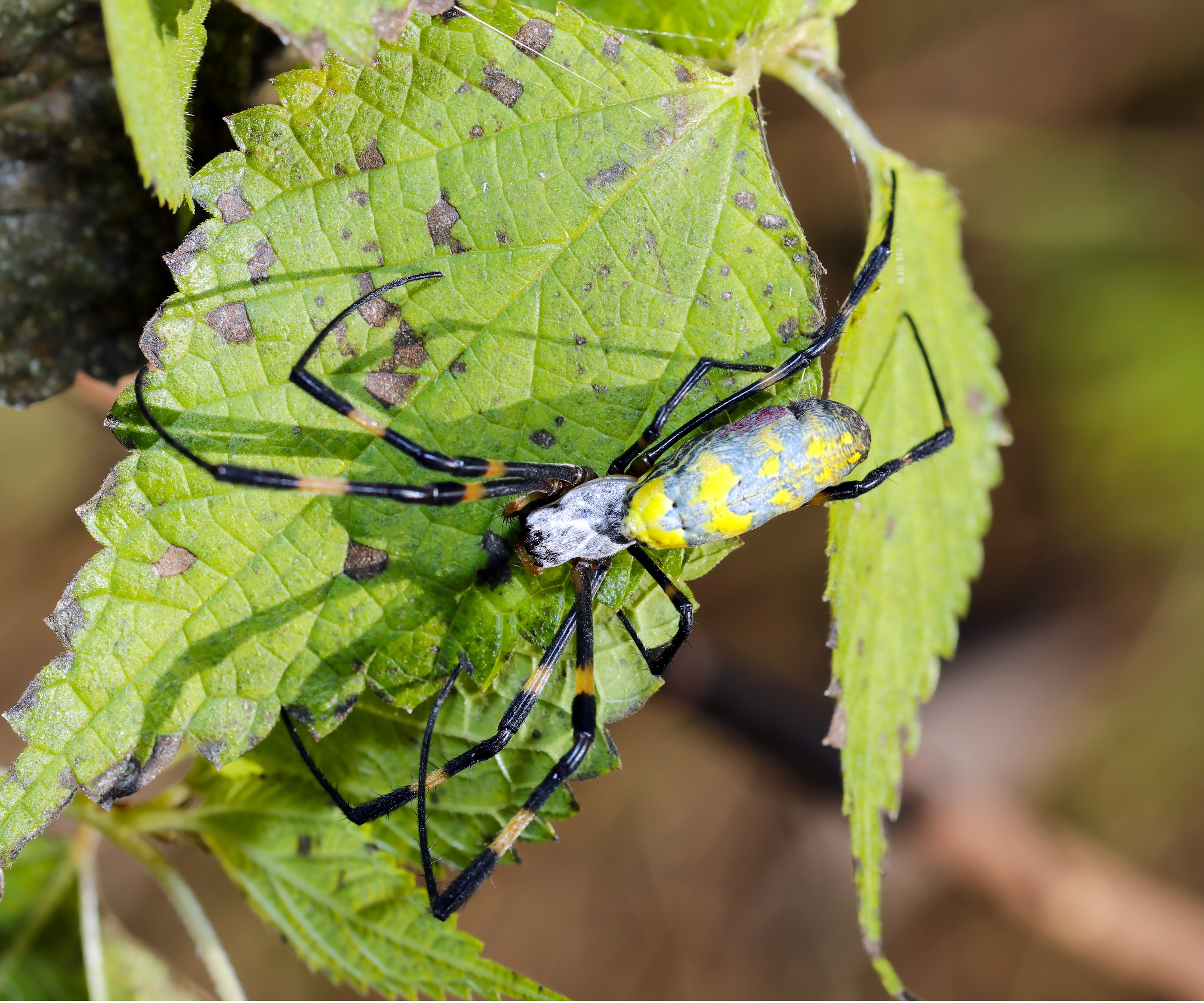How to repel Joro spiders from your yard – expert methods to keep these creepy crawlies away
These scary-looking spiders are cropping up in US gardens. Here's how you can keep them at bay


Backyards across the US are increasingly becoming home to the scary but quiet critters known as Joro spiders. These yellow and red-patterned spiders are native to East Asia and have recently been spotted in gardens primarily on the East Coast. These spiders cleverly use their large, golden webs to become airborne and get transported in the wind - which is why many refer to them as 'flying spiders'.
'This East Asian native spider is a fairly new invasive species of golden orb-web spiders,' says Scot Hodges, entomologist at Arrow Exterminators. 'You may have seen and dealt with orb-weaver spiders before, which can actually be very beneficial; the Joro is no exception. These spiders, like your typical orb-weaver spider, eat various insects like mosquitoes, biting flies and even brown marmorated stink bugs,' he adds.
While these spiders are helpful for getting rid of mosquitoes and getting rid of stink bugs, you may be inclined to repel them to prevent their large webs draping in your yard and to protect pollinators, who can be a target. We've spoken to experts to find out how to repel Joro spiders and this is what they shared.

How to repel Joro spiders
Although they're harmless and can help get rid of other pests, there are a few things you can do to repel Joro spiders from your yard, if you wish to keep your outdoor space clear of these eight-legged critters.
Remove food sources for Joro spiders

The first place to start is reducing their food source. 'Like most orb-weaver spiders, their diet is primarily composed of small flying insects such as mosquitoes and flies, among other pests,' says Allan Bossel, pest control expert and operations expert at BBE Bed Bug Exterminator .
'The best way to limit Joro spider populations is by reducing the number of insects they feed on within your yard. Removal of cobwebs regularly plus keeping your garden clean can help deter them. Insect screens can help protect specific areas,' he adds.
You can also try making a homemade bug spray using different organic ingredients, or use this neem oil spray for pest control from Amazon. You can also find insect screens online, like this screen mesh from Amazon, to keep insects out of different zones in your yard and deter Joro spiders by taking away their food source.
'Turning off outdoor lights when not used may also lessen the amount of insects attracted to your yard which can decrease the food supply available for Joro spiders, too,' Allan adds.

Scot Hodges is the President of Professional Development and Technical Services at Arrow Exterminators, Atlanta-based pest control experts.

Allan Bossel currently serves as an Operations Expert at BBE Bed Bug Exterminator, where his extensive experience in bed bug and pest control allows him to maximize BBE’s service potential. Having founded his own pest control business in Michigan, Allan’s background is rich with over a decade of professional pest extermination and lab work experience.
Make your yard uninhabitable for Joro spiders

Like other spiders, Joro spiders will hide among foliage and debris. Keeping on top of your plant care can, therefore, assist in making your yard less appealing to them.
'Keeping firewood and other harborage areas away from the home will reduce Joro spider activity,' notes Trevor Richard, entomologist and pest control expert at Fox Pest Control. Joro spiders will take shelter in these spots and likewise weave their webs on low trees and bushes. There are also a number of ways to get rid of bugs in firewood, which reduces food sources for Joro spiders.
'Knocking down their webbing and keeping plant material maintained, like pruning low tree branches, will also help reduce spider activity and other pest activity,' he adds.
Although it can be tricky to keep Joro spiders away entirely, due to their 'flying' nature and increasing populations, the best way to repel them is by making your yard undesirable.

Trevor Richard is an Associate Certified Entomologist and Operations Training Instructor with Fox Pest Control.
FAQs
How do I get rid of a Joro spider infestation?
If your backyard has become covered in the large, golden webs, you might have a Joro spider population taking residence. There are a range of products that can help you get rid of them.
'The most effective insecticides for Joro spiders are those containing bifenthrin, deltamethrin or lambda-cyhalothrin, which will quickly kill the spider and its eggs and prevent further infestations,' says Scot Hodges, entomologist at Arrow Exterminators.
Once you have got rid of them, it can then be a good idea to make your yard undesirable to repel Joro spiders, such as cutting back foliage and reducing their food sources.
Are Joro spiders dangerous?
Although they have an intimidating appearance, Joro spiders aren't dangerous. They are part of the orb-weaving spider family and only have small mouth parts. While this doesn't mean they can't bite humans or animals, they are unlikely to do so and their bite isn't dangerous to health. Experts liken Joro spider bites to bee stings and reassure that they aren't considered dangerous.
As more and more US gardens become covered in Joro spider webs, you might want to take precautions to repel these scary-looking critters from your yard - and the best way to do so is by making your yard uninhabitable for them.
Find out how else to keep spiders away for a peace of mind in your home and yard.
Sign up to the Homes & Gardens newsletter
Design expertise in your inbox – from inspiring decorating ideas and beautiful celebrity homes to practical gardening advice and shopping round-ups.

Tenielle is a Gardens News Writer at Homes & Gardens. She holds a qualification in MA Magazine Journalism and has over six years of journalistic experience. Before coming to Homes & Gardens, Tenielle was in the editorial department at the Royal Horticultural Society and worked on The Garden magazine. As our in-house houseplant expert, Tenielle writes on a range of solutions to houseplant problems, as well as other 'how to' guides, inspiring garden projects, and the latest gardening news. When she isn't writing, Tenielle can be found propagating her ever-growing collection of indoor plants, helping others overcome common houseplant pests and diseases, volunteering at a local gardening club, and attending gardening workshops, like a composting masterclass.
-
 Dyson V15 Detect vs Dyson V12 Detect Slim – which is right for your home?
Dyson V15 Detect vs Dyson V12 Detect Slim – which is right for your home?I've spent more than 200 hours testing vacuum cleaners and these two cordless Dysons are my personal favorites
By Dan Fauzi
-
 Your perfect Easter menu: our favorite Easter recipes for effortless entertaining
Your perfect Easter menu: our favorite Easter recipes for effortless entertainingFresh flavors, easy dishes, and crowd-pleasing ideas – our selection of Easter recipes make for a relaxed yet elevated spring celebration
By Alice Hart